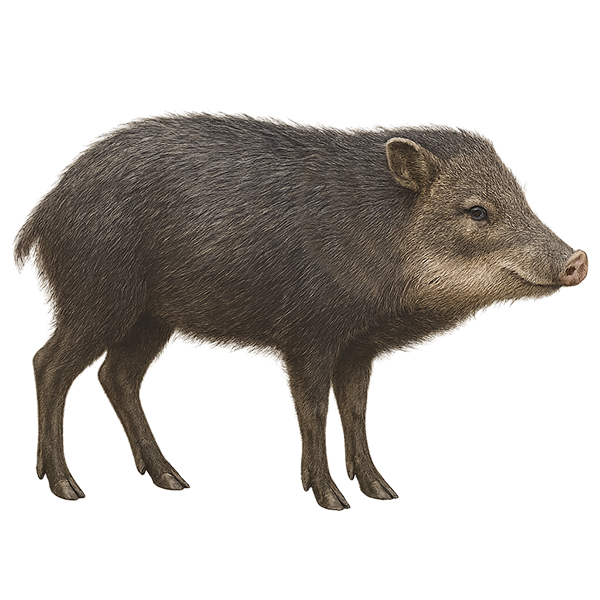Your wildlife photography guide.
Explore the white-lipped peccary in detail, study its behavior, prepare your shots.
Where to observe and photograph the white-lipped peccary in the wild
Learn where and when to spot the white-lipped peccary in the wild, how to identify the species based on distinctive features, and what natural environments it inhabits. The WildlifePhotographer app offers tailored photography tips that reflect the white-lipped peccary’s behavior, helping you capture better wildlife images. Explore the full species profile for key information including description, habitat, active periods, and approach techniques.
White-lipped peccary
Scientific name: Tayassu pecari

IUCN Status: Vulnerable
Family: TAYASSUIDAE
Group: Mammals
Sensitivity to human approach: Shy
Minimum approach distance: 20 m
Rut period: March to May
Gestation: 155-170 jours
Births: August to October
Habitat:
Tropical forests, savannas, wetlands
Activity period :
Primarily active during the day, with peak activity in the morning and late afternoon.
Identification and description:
The white-lipped peccary, Tayassu pecari, is a medium-sized mammal belonging to the Tayassuidae family. It is characterized by its dark brown to black fur with a distinctive white band around its mouth. This peccary lives in social groups that can number up to several dozen individuals, which is essential for its survival against predators. It primarily inhabits the dense tropical forests of Central and South America, where it plays a crucial role in the ecosystem by dispersing seeds. An omnivore, it feeds on fruits, roots, insects, and small animals. Unfortunately, this species is threatened by deforestation and excessive hunting, leading to a significant decline in its population.
Recommended lens:
400 mm – adjust based on distance, desired framing (portrait or habitat), and approach conditions.
Photography tips:
To photograph the white-lipped peccary, it is essential to blend into the environment and remain still to avoid scaring these shy animals. Use a telephoto lens of at least 400mm to capture detailed images from a distance. The tropical forests where they live often provide dim lighting, so adjust your ISO accordingly to avoid motion blur. Be patient and wait for them to approach naturally, taking advantage of their social behavior to capture interesting interactions within the group.
The WildlifePhotographer App is coming soon!
Be the first to explore the best nature spots, track rutting seasons, log your observations, and observe more wildlife.
Already 1 429 wildlife lovers subscribed worldwide

